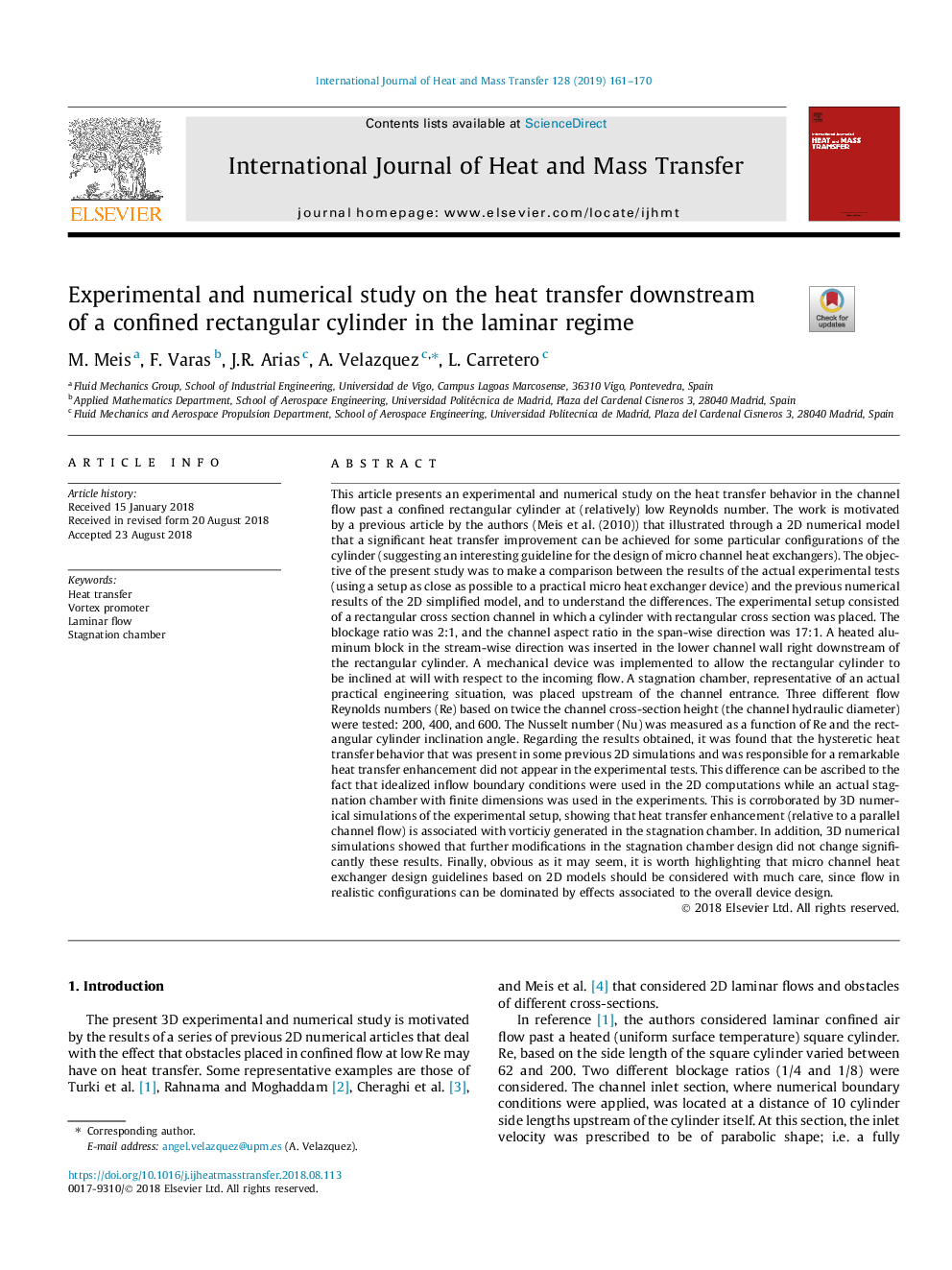| کد مقاله | کد نشریه | سال انتشار | مقاله انگلیسی | نسخه تمام متن |
|---|---|---|---|---|
| 10139856 | 1645984 | 2019 | 10 صفحه PDF | دانلود رایگان |
عنوان انگلیسی مقاله ISI
Experimental and numerical study on the heat transfer downstream of a confined rectangular cylinder in the laminar regime
ترجمه فارسی عنوان
تحلیلی تجربی و عددی بر روی انتقال حرارت پایین سیلندر مستطیلی محدود در رژیم لمینار
دانلود مقاله + سفارش ترجمه
دانلود مقاله ISI انگلیسی
رایگان برای ایرانیان
کلمات کلیدی
انتقال گرما، پروموتر گردابه، جریان آرام، محفظه رکود،
موضوعات مرتبط
مهندسی و علوم پایه
مهندسی شیمی
جریان سیال و فرایندهای انتقال
چکیده انگلیسی
This article presents an experimental and numerical study on the heat transfer behavior in the channel flow past a confined rectangular cylinder at (relatively) low Reynolds number. The work is motivated by a previous article by the authors (Meis et al. (2010)) that illustrated through a 2D numerical model that a significant heat transfer improvement can be achieved for some particular configurations of the cylinder (suggesting an interesting guideline for the design of micro channel heat exchangers). The objective of the present study was to make a comparison between the results of the actual experimental tests (using a setup as close as possible to a practical micro heat exchanger device) and the previous numerical results of the 2D simplified model, and to understand the differences. The experimental setup consisted of a rectangular cross section channel in which a cylinder with rectangular cross section was placed. The blockage ratio was 2:1, and the channel aspect ratio in the span-wise direction was 17:1. A heated aluminum block in the stream-wise direction was inserted in the lower channel wall right downstream of the rectangular cylinder. A mechanical device was implemented to allow the rectangular cylinder to be inclined at will with respect to the incoming flow. A stagnation chamber, representative of an actual practical engineering situation, was placed upstream of the channel entrance. Three different flow Reynolds numbers (Re) based on twice the channel cross-section height (the channel hydraulic diameter) were tested: 200, 400, and 600. The Nusselt number (Nu) was measured as a function of Re and the rectangular cylinder inclination angle. Regarding the results obtained, it was found that the hysteretic heat transfer behavior that was present in some previous 2D simulations and was responsible for a remarkable heat transfer enhancement did not appear in the experimental tests. This difference can be ascribed to the fact that idealized inflow boundary conditions were used in the 2D computations while an actual stagnation chamber with finite dimensions was used in the experiments. This is corroborated by 3D numerical simulations of the experimental setup, showing that heat transfer enhancement (relative to a parallel channel flow) is associated with vorticiy generated in the stagnation chamber. In addition, 3D numerical simulations showed that further modifications in the stagnation chamber design did not change significantly these results. Finally, obvious as it may seem, it is worth highlighting that micro channel heat exchanger design guidelines based on 2D models should be considered with much care, since flow in realistic configurations can be dominated by effects associated to the overall device design.
ناشر
Database: Elsevier - ScienceDirect (ساینس دایرکت)
Journal: International Journal of Heat and Mass Transfer - Volume 128, January 2019, Pages 161-170
Journal: International Journal of Heat and Mass Transfer - Volume 128, January 2019, Pages 161-170
نویسندگان
M. Meis, F. Varas, J.R. Arias, A. Velazquez, L. Carretero,
